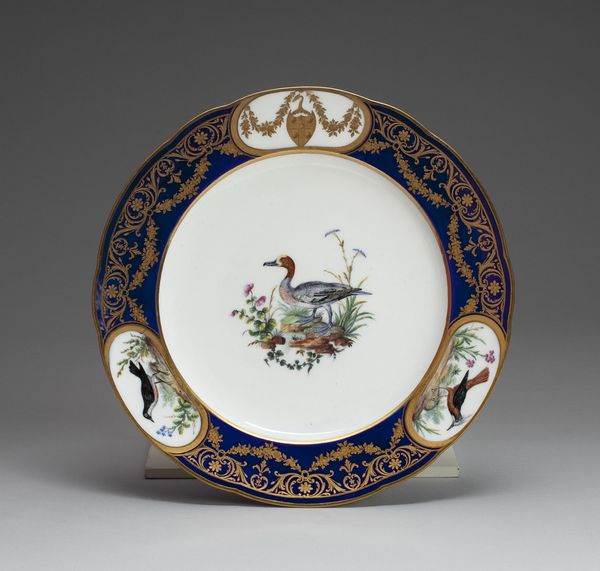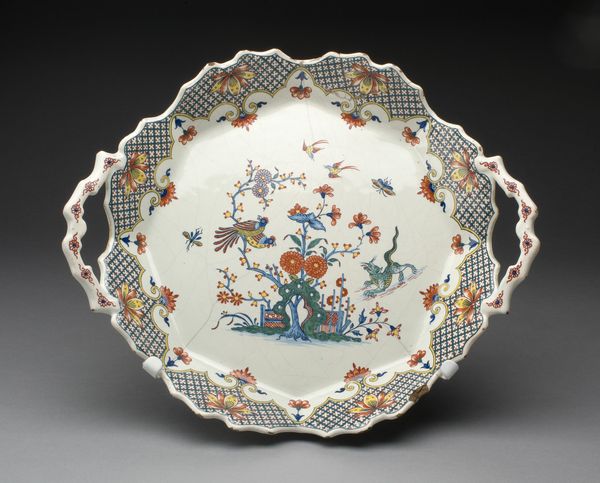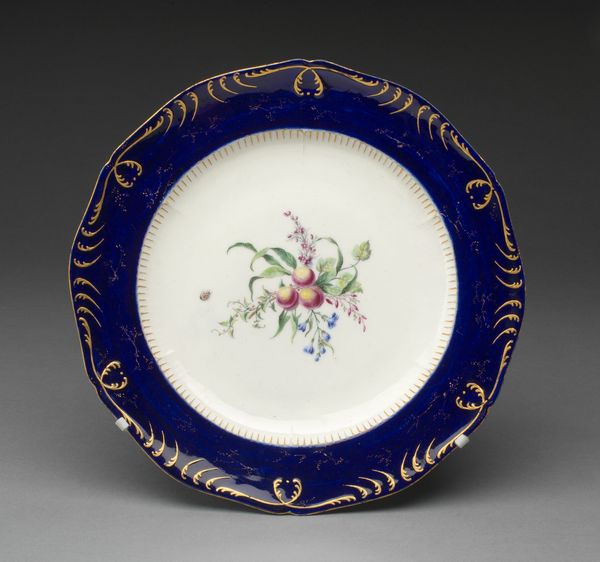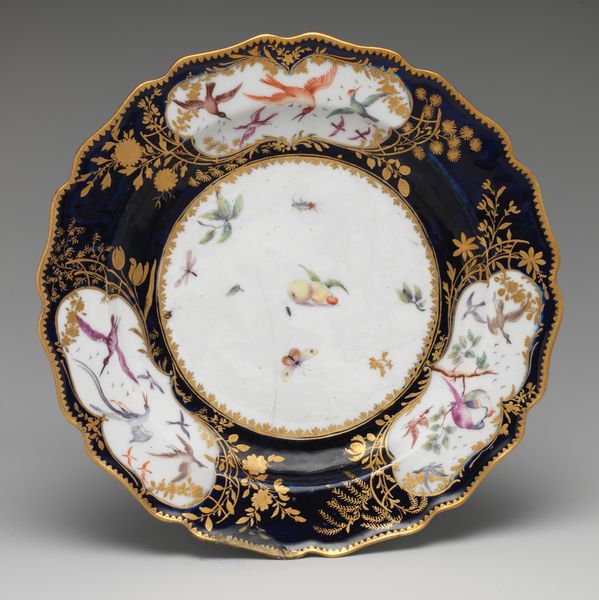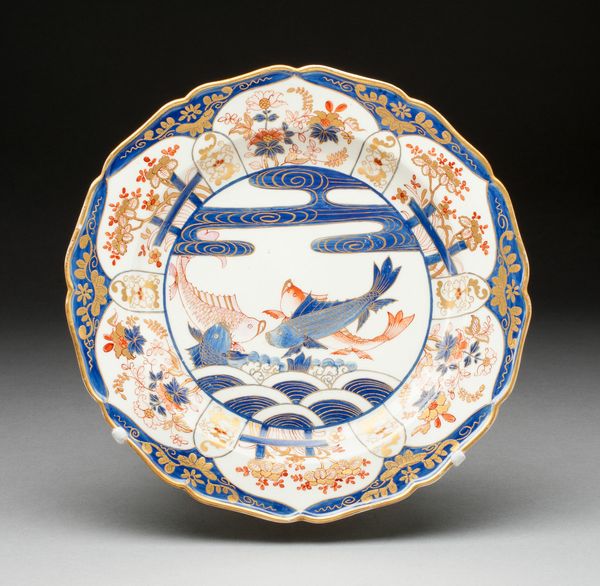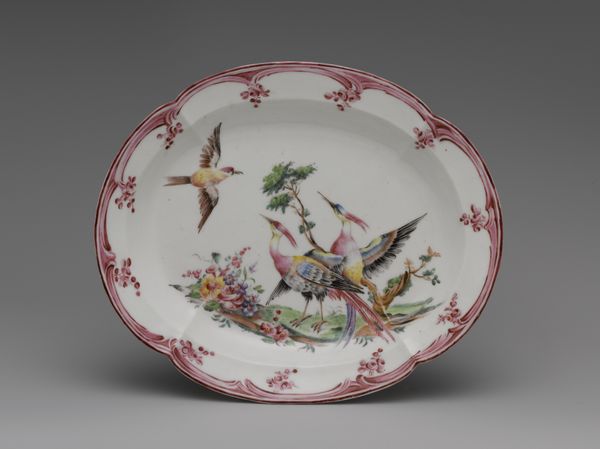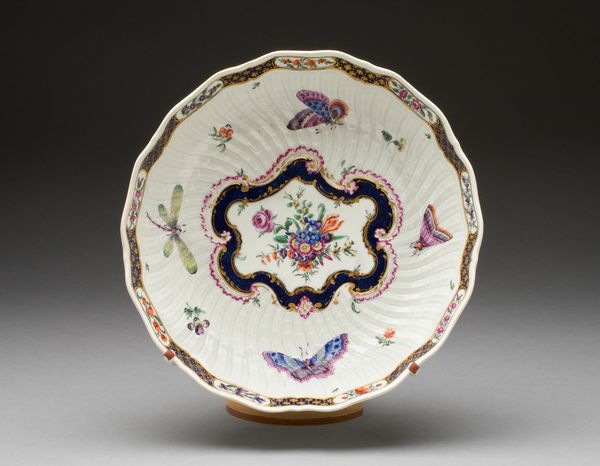
painting, ceramic, porcelain
#
pottery
#
painting
#
ceramic
#
porcelain
#
orientalism
#
decorative-art
Dimensions: Diam. 24.8 cm (9 3/4 in.)
Copyright: Public Domain
Editor: Here we have a "Dish" from around 1770, crafted by the Worcester Royal Porcelain Company. It’s a beautiful example of ceramic work. The vibrant colors, especially that rich blue, strike me immediately. How do you interpret this work, considering its historical context? Curator: This dish presents a fascinating intersection of global trade, colonialism, and aesthetic appropriation. The "orientalism" style reflects Europe’s fascination with, and often misrepresentation of, Eastern cultures. Consider the peacocks: they aren’t just decorative, they’re symbols, signifiers of exoticism and luxury imported and consumed by the British elite. How do you think the choice of these motifs reinforces power dynamics? Editor: It feels like the peacocks become objects, almost trophies, displayed for their rarity and beauty. Was there any attempt at authentic cultural representation, or was it all filtered through a European lens? Curator: That’s a crucial question. These images weren't created from a place of cultural understanding but from colonial desire and market demands. The dish becomes a site where British identity is reinforced through its relationship with the ‘Other,’ essentially legitimizing Britain’s colonial presence and influence. It embodies an asymmetrical relationship between colonizer and colonized. What’s your take on how such objects play into the narratives of empire? Editor: It’s troubling to think about. I suppose it’s easy to get lost in the beauty without considering the deeper, and darker, implications of its creation. It sounds as though art isn’t just art – it also functions to uphold systems of power. Curator: Precisely. By recognizing that history and questioning the intention, we can challenge the art world's prevailing ideologies and inspire meaningful dialogue around identity, gender, race, and politics. What do you take away from our analysis of this ceramic piece? Editor: I’ll never see porcelain the same way again. Now I see an object embedded with a historical narrative beyond its beautiful facade. Thank you for offering new ways to approach art and material culture.
Comments
No comments
Be the first to comment and join the conversation on the ultimate creative platform.
